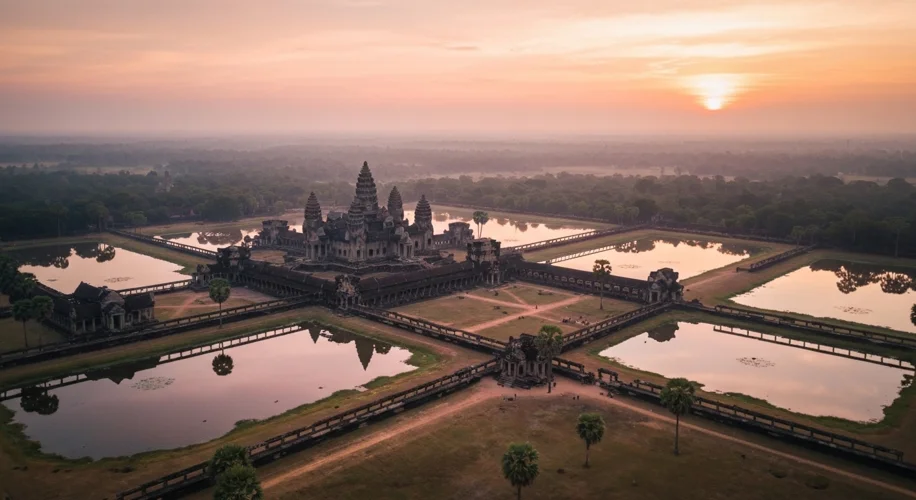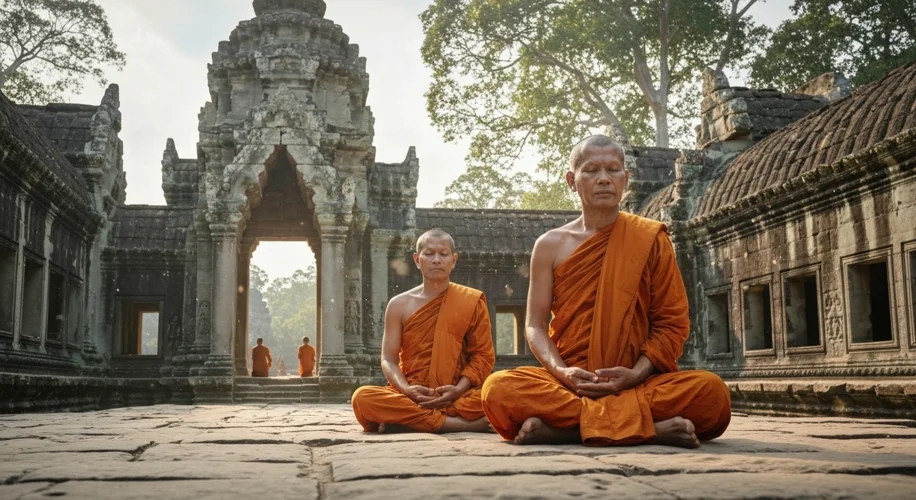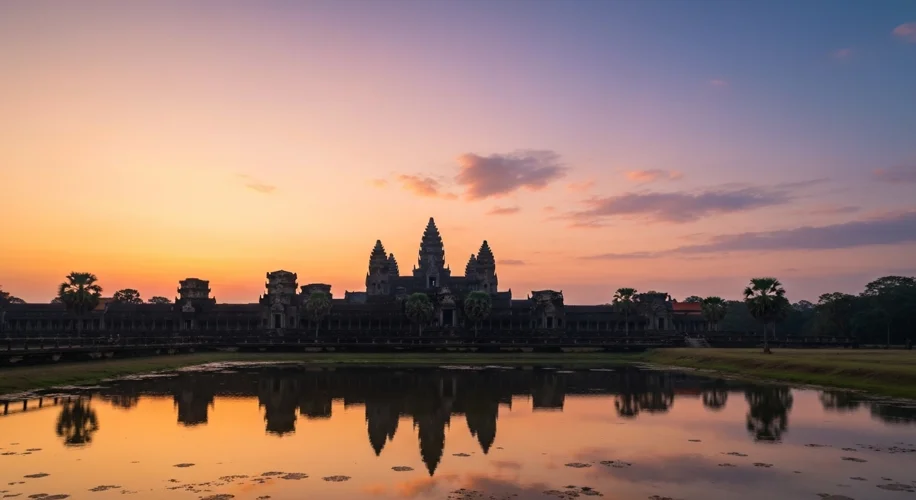Imagine a canvas stretching for miles, not of cloth, but of intricate stone carvings depicting celestial dancers, epic battles, and the very fabric of the cosmos. This was the vision of one man, a Khmer king named Suryavarman II, who in the early 12th century, set out to build not just a temple, but a microcosm of his universe, a testament to his power, and a final resting place that would echo through eternity.
We stand today, in 2025, before the colossal stone embrace of Angkor Wat, a name that whispers of ancient grandeur. But to truly grasp its magnitude, we must journey back to a time when the Khmer Empire, centered in the heart of Cambodia, was a titan of Southeast Asia, its influence stretching across vast territories. Angkor, the sprawling capital, was a city of unparalleled sophistication, a hub of trade, religion, and culture, buzzing with the life of hundreds of thousands.
Suryavarman II, ascending to the throne in 1113, was a ruler of ambition and deep spiritual conviction. His reign marked a golden age for the Khmer Empire, a period of peace and prosperity that allowed for monumental undertakings. Yet, it was also a time of immense religious fervor, with Hinduism, particularly the worship of Vishnu, deeply intertwined with the royal court. Angkor Wat was to be the ultimate expression of this devotion, a grand offering to Vishnu, and simultaneously, a mortuary temple for the king himself.

The construction of Angkor Wat was not a swift endeavor; it was a labor of decades, a testament to human ingenuity and sheer willpower. Picture an army of thousands, perhaps tens of thousands, of skilled artisans, laborers, and engineers, toiling under the relentless Southeast Asian sun. They quarried sandstone from Mount Kulen, miles away, and transported these colossal blocks, weighing tons, using a sophisticated network of canals, rivers, and possibly elephant power. Imagine the rhythmic chants of the workers, the clang of tools against stone, the sweat, the dust, the sheer human effort poured into every single block.
The very design of Angkor Wat is a marvel. It’s more than just a collection of buildings; it’s a three-dimensional representation of Mount Meru, the mythical abode of the gods in Hindu cosmology. The central towers, reaching skyward like lotus buds, symbolize the five peaks of Meru. The entire complex is surrounded by a vast moat, representing the cosmic ocean, and enclosed by concentric galleries that depict scenes from Hindu epics, historical events, and daily life. The bas-reliefs here are not mere decorations; they are a chronicle, a visual encyclopedia of Khmer civilization. Stroll through the Grand Gallery and you’ll find the Battle of Kurukshetra from the Mahabharata unfolding before your eyes, or the churning of the Ocean of Milk, a cosmic event where gods and demons collaborated to bring forth immortality.

Suryavarman II, the driving force behind this monumental project, likely oversaw its construction for much of his reign. He envisioned it as his earthly paradise, a place where he could commune with the divine and, upon his death, ascend to join Vishnu. The central sanctuary, reached by steep stairways symbolizing the arduous climb to the heavens, would have been the focal point of his spiritual and political life.
But what happens to such a magnificent creation after its creator is gone? Angkor Wat transitioned. As Buddhism gained prominence in the Khmer Empire, the temple was gradually transformed. Monks arrived, adding their own touches, painting Buddhist murals over the Hindu imagery, and adapting the sacred spaces for their practices. This layering of religious traditions is one of the most fascinating aspects of Angkor Wat, a testament to the evolving spiritual landscape of the empire.

The legacy of Angkor Wat is immeasurable. It stands not only as the largest religious monument in the world but as a powerful symbol of the Khmer Empire’s immense architectural, artistic, and engineering prowess. It’s a window into a sophisticated civilization, its beliefs, its social structures, and its place in the world. For centuries, it lay partially reclaimed by the jungle, a silent guardian of forgotten glories, until its rediscovery by the West in the mid-19th century. Today, it continues to inspire awe, drawing millions who come to walk its hallowed corridors, touch its weathered stones, and feel the echoes of a king’s eternal ambition resonating through the ages.
Angkor Wat is more than just stone and mortar. It’s a story etched in rock, a narrative of faith, power, and the enduring human quest for immortality. It reminds us that even as empires rise and fall, the creations born from human spirit and dedication can transcend time itself.

